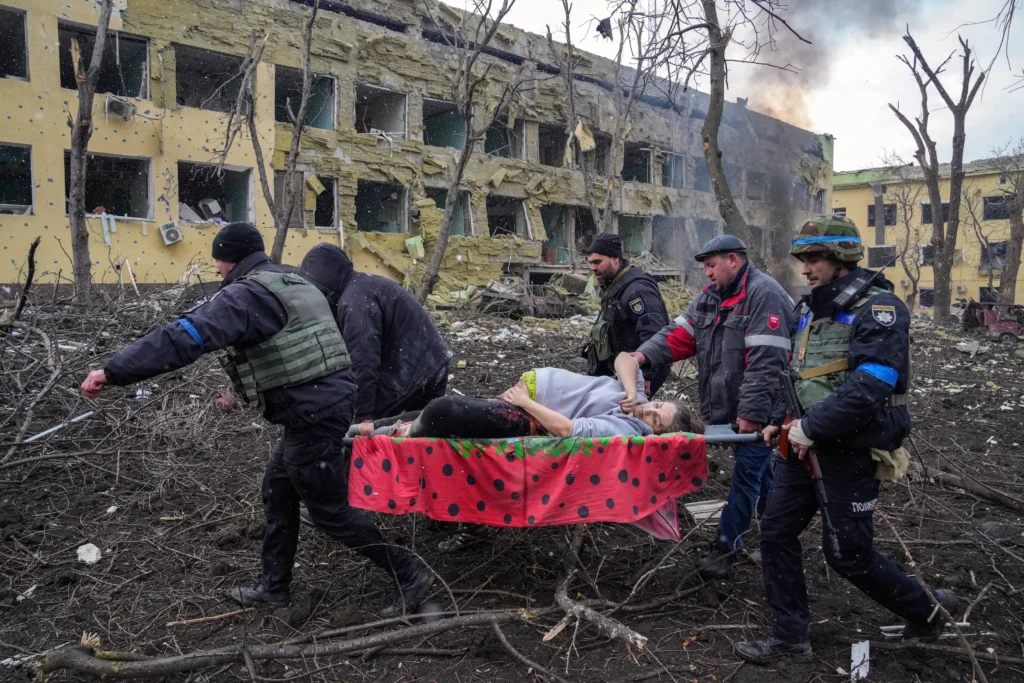NEW YORK – The Associated Press today won the Pulitzer Prize for Public Service for its gripping reporting out of Mariupol, Ukraine, during the Russian siege of the port city, and the Pulitzer Prize for Breaking News Photography for its heart-wrenching visual coverage of the horrors of the Russia-Ukraine war.


These are the 57th and 58th Pulitzer Prizes earned by The Associated Press, including 35 for photography.
See a slideshow of the winning images.
“AP journalists have done courageous and important work in Ukraine throughout the war, shining a spotlight in particular on the human toll of the conflict,” said AP Senior Vice President and Executive Editor Julie Pace. “From dispelling Russian misinformation to contributing to the creation of a humanitarian corridor, their work has been an incredible public service and we’re so pleased that it has been honored by the Pulitzer board.”
The prestigious Gold Medal for Public Service was awarded on the strength of the Mariupol team’s exclusive reporting and defining images of the siege of the city, which offered the world a window into the devastating reality of Russia’s invasion.
The only international journalists remaining in Mariupol, Mstyslav Chernov, Evgeniy Maloletka and Vasilisa Stepanenko documented the horrors of Russia’s occupation, including mass graves, dying children and the shelling of a maternity hospital, living under constant bombardment until their harrowing escape. Cut off from electricity and communication, the AP team moved throughout the city searching for the faintest of signals to transmit reporting.
The team’s work saved thousands of lives, according to the deputy mayor of Mariupol, who said the atrocities exposed by AP led to a push for humanitarian corridors and allowed mass evacuations. Their reporting was instrumental in combatting misinformation about the war.
Along with the eyewitness journalism, reporter Lori Hinnant’s visual investigation of the bombing of a Mariupol theater revealed the death toll of the single deadliest attack on Ukrainian citizens was nearly double what had been estimated. Using an innovative methodology, AP drew on accounts of nearly two dozen survivors, rescuers and people familiar with the shelter, as well as floor plans, photos and video to create a 3D model praised by experts.
The breaking news photography achievement was awarded on the strength of photos taken by AP photographers who captured the horrors of Russia’s invasion since the start of the war in February 2022.
From Kyiv, Mariupol, Bucha, Kharkiv and Kherson, AP photographers provided an unfiltered look at the horrors of war. They captured images of the dead and dying in raw, heart-wrenching detail, balancing the responsibility of documenting the news with their own safety operating in a conflict zone.
The Pulitzer juries nominated four AP finalists, including the two winners.
AP was a finalist in the breaking news photography category for images capturing anger over economic collapse in Sri Lanka, including protesters taking over government buildings amid clouds of tear gas.
AP was also a finalist in the feature photography category for photos that showed the plight of elderly Ukrainians hit by the violence and chaos of war, and the devotion of their rescuers.
“When it comes to telling a story, nothing can replace being on the ground, which is so often difficult and dangerous,” said J. David Ake, AP’s director of photography. “I am incredibly proud of AP’s photojournalists in Ukraine and Sri Lanka, who, despite especially challenging circumstances, used their vision, skill and tenacity to allow the world to be there, too.”
The Pulitzer Prize for Public Service caps a long string of awards for the work of the Mariupol reporting team, including the World Press Photo of the Year, the Prix Bayeux, Royal Television Society Television Journalism Awards and the George Polk Award for War Reporting.
Their work is also the subject of the AP-Frontline documentary “20 Days in Mariupol,” which earned the Sundance Film Festival’s World Cinema Documentary Audience Award.
AP last earned the Pulitzer Prize for Public Service in 2016 for its investigation of the fishing industry in Southeast Asia that freed more than 2,000 slaves and traced the seafood they caught to supermarkets and pet food providers across the U.S. It last won the breaking news photography prize in 2021 for images of explosive protests in the U.S. over racial injustice.
Contact
Lauren Easton
Vice President of Corporate Communications
The Associated Press
212-621-7005
leaston@ap.org
Nicole Meir
Media Relations Manager
The Associated Press
212-621-7536
nmeir@ap.org

